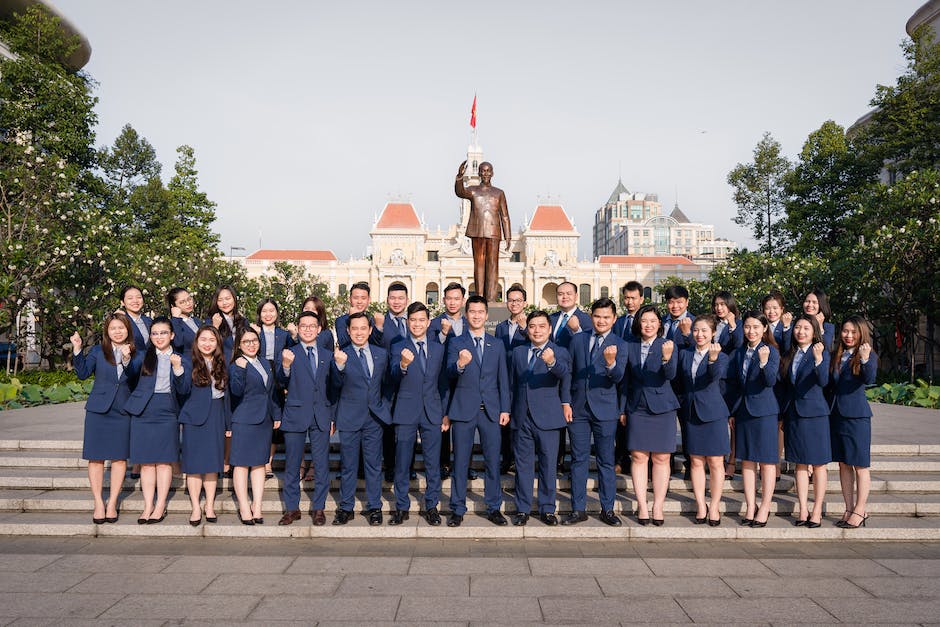Table of Contents
- Introduction
- Unveiling the Role of a CEO: Responsibilities and Challenges
- The Crucial Role of a CFO: Financial Leadership and Decision-making
- Demystifying the Corporate Suite: Understanding the Roles of COO, CMO, and CTO
- Exploring the Dynamics of the Corporate Suite: Interactions and Collaborations among Executives
- Q&A
- Conclusion
Decoding the Mysteries of the Corporate Suite: Unveiling the Secrets of CEOs, CFOs, and More.
Introduction
The corporate suite is a term used to refer to the top-level executives within a company who hold key leadership positions. Among these executives, the CEO (Chief Executive Officer) and CFO (Chief Financial Officer) are two of the most prominent roles. However, there are several other positions that make up the corporate suite, each with their own responsibilities and areas of expertise. In this article, we will decode the mysteries of the corporate suite by exploring the roles and functions of these executives, shedding light on their importance in driving the success of a company.
Unveiling the Role of a CEO: Responsibilities and Challenges

The role of a CEO, or Chief Executive Officer, is often seen as the pinnacle of corporate leadership. This individual is responsible for making strategic decisions that shape the direction of the company and ultimately determine its success or failure. The CEO is the face of the organization, representing it to shareholders, employees, and the public. But what exactly does a CEO do, and what challenges do they face in their role?
One of the primary responsibilities of a CEO is to set the vision and mission of the company. This involves defining the long-term goals and objectives and developing a strategy to achieve them. The CEO must have a deep understanding of the industry in which the company operates and be able to anticipate and respond to changes in the market. They must also be able to effectively communicate the company’s vision to employees and stakeholders, inspiring them to work towards a common goal.
Another key responsibility of a CEO is to build and lead a high-performing executive team. This involves hiring and retaining top talent, delegating responsibilities, and fostering a culture of collaboration and innovation. The CEO must also provide guidance and support to their team, helping them to develop their skills and achieve their full potential. They must be able to make tough decisions, such as restructuring or downsizing, when necessary, and ensure that the company is always operating in the best interests of its stakeholders.
In addition to these responsibilities, a CEO must also be adept at managing relationships with external stakeholders. This includes investors, customers, suppliers, and regulatory bodies. The CEO must be able to build and maintain strong relationships with these stakeholders, ensuring that the company is able to secure the necessary resources and support to achieve its goals. They must also be able to navigate complex regulatory environments and ensure that the company is in compliance with all applicable laws and regulations.
Being a CEO is not without its challenges. The role requires a high level of resilience and the ability to handle pressure and uncertainty. CEOs must be able to make difficult decisions under tight deadlines and in the face of conflicting information. They must also be able to manage their time effectively, balancing the demands of the job with their personal and family life. The CEO is often the target of intense scrutiny and criticism, and must be able to handle this with grace and professionalism.
In conclusion, the role of a CEO is a complex and demanding one. They are responsible for setting the vision and direction of the company, building and leading a high-performing team, and managing relationships with external stakeholders. They must be able to make tough decisions and handle pressure and uncertainty with resilience. While the challenges of being a CEO are great, so too are the rewards. A successful CEO has the opportunity to shape the future of the company and make a lasting impact on the industry in which they operate.
The Crucial Role of a CFO: Financial Leadership and Decision-making
The role of a Chief Financial Officer (CFO) in a company is crucial to its success. The CFO is responsible for overseeing the financial operations of the organization and providing financial leadership and decision-making. This article will delve into the various aspects of the CFO’s role and shed light on the mysteries of the corporate suite.
One of the primary responsibilities of a CFO is to manage the company’s financial resources. This includes overseeing the budgeting process, ensuring that financial goals are met, and making strategic financial decisions. The CFO works closely with other executives and department heads to develop financial plans and strategies that align with the company’s overall goals and objectives.
In addition to managing financial resources, the CFO is also responsible for financial reporting and analysis. This involves preparing and presenting financial statements, such as balance sheets and income statements, to stakeholders, including investors, board members, and regulatory authorities. The CFO must ensure that these reports are accurate, transparent, and in compliance with accounting standards and regulations.
Furthermore, the CFO plays a crucial role in risk management. They are responsible for identifying and assessing financial risks that could impact the company’s performance and reputation. This includes monitoring market trends, evaluating investment opportunities, and implementing risk mitigation strategies. The CFO must have a deep understanding of the company’s industry and the broader economic landscape to effectively manage these risks.
Another important aspect of the CFO’s role is financial planning and forecasting. The CFO works closely with the CEO and other executives to develop long-term financial plans and projections. This involves analyzing historical financial data, market trends, and industry benchmarks to forecast future financial performance. By providing accurate and reliable financial forecasts, the CFO helps the company make informed strategic decisions and allocate resources effectively.
The CFO also plays a key role in capital management. They are responsible for managing the company’s capital structure, including debt and equity financing. This involves evaluating financing options, negotiating with lenders and investors, and ensuring that the company has access to the necessary capital to fund its operations and growth initiatives. The CFO must strike a balance between maximizing shareholder value and maintaining a healthy financial position.
Furthermore, the CFO is often involved in mergers and acquisitions (M&A) activities. They play a critical role in evaluating potential acquisition targets, conducting due diligence, and negotiating deal terms. The CFO must assess the financial viability and strategic fit of potential acquisitions and ensure that they align with the company’s growth strategy. They also play a key role in integrating the financial operations of acquired companies into the existing organization.
In conclusion, the CFO plays a crucial role in the corporate suite. They are responsible for managing the company’s financial resources, providing financial leadership and decision-making, and ensuring compliance with accounting standards and regulations. The CFO’s role encompasses financial reporting and analysis, risk management, financial planning and forecasting, capital management, and involvement in M&A activities. By effectively fulfilling these responsibilities, the CFO contributes to the overall success and growth of the company.
Demystifying the Corporate Suite: Understanding the Roles of COO, CMO, and CTO
In the world of business, the corporate suite is often shrouded in mystery. From the CEO to the CFO, the roles and responsibilities of these high-level executives can be confusing to those outside the corporate world. However, understanding the functions of these positions is crucial for anyone looking to navigate the corporate landscape.
At the top of the corporate hierarchy is the CEO, or Chief Executive Officer. This individual is responsible for the overall direction and strategy of the company. They are the ultimate decision-maker and have the final say on all major business decisions. The CEO is also the face of the company, representing it to shareholders, the media, and the public. They must possess strong leadership skills and be able to inspire and motivate their team.
Working alongside the CEO is the CFO, or Chief Financial Officer. As the name suggests, the CFO is responsible for managing the company’s finances. They oversee financial planning, budgeting, and reporting, ensuring that the company remains financially healthy. The CFO also plays a key role in strategic decision-making, providing financial analysis and insights to support the CEO’s vision. Strong analytical and problem-solving skills are essential for this role.
Another important position in the corporate suite is the COO, or Chief Operating Officer. The COO is responsible for the day-to-day operations of the company. They ensure that the company’s operations are running smoothly and efficiently, overseeing departments such as production, logistics, and customer service. The COO works closely with the CEO to implement the company’s strategy and achieve its goals. Strong organizational and managerial skills are crucial for this role.
In addition to the CEO, CFO, and COO, there are several other key positions in the corporate suite. The CMO, or Chief Marketing Officer, is responsible for developing and implementing the company’s marketing strategy. They oversee all marketing activities, including advertising, branding, and market research. The CMO plays a crucial role in driving customer acquisition and retention, and must have a deep understanding of consumer behavior and market trends.
The CTO, or Chief Technology Officer, is responsible for the company’s technology strategy. They oversee the development and implementation of technology solutions that support the company’s goals. The CTO plays a crucial role in driving innovation and ensuring that the company remains competitive in the digital age. They must have a strong technical background and be able to anticipate and adapt to technological advancements.
While these positions may seem distinct, they often work closely together to achieve the company’s objectives. The CEO sets the overall direction, while the CFO provides financial insights and the COO ensures smooth operations. The CMO and CTO, on the other hand, focus on marketing and technology strategies respectively, supporting the company’s growth and innovation.
In conclusion, understanding the roles and responsibilities of the corporate suite is essential for anyone looking to navigate the business world. From the CEO to the CFO, each position plays a crucial role in driving the company’s success. By decoding the mysteries of the corporate suite, individuals can gain a better understanding of how businesses operate and make informed decisions in their own careers.
Exploring the Dynamics of the Corporate Suite: Interactions and Collaborations among Executives
In the world of business, the corporate suite is a place of power and influence. It is where the top executives of a company come together to make important decisions and shape the future of the organization. The individuals who occupy these positions, such as the CEO, CFO, and others, are often seen as the driving force behind the success or failure of a company. But what exactly goes on in the corporate suite? How do these executives interact and collaborate with one another?
To understand the dynamics of the corporate suite, it is important to first understand the roles and responsibilities of the various executives who occupy these positions. At the top of the hierarchy is the CEO, or Chief Executive Officer. The CEO is the highest-ranking executive in a company and is responsible for making major corporate decisions, managing the overall operations of the organization, and representing the company to stakeholders and the public. The CEO sets the strategic direction of the company and works closely with other executives to ensure that the organization is moving in the right direction.
One of the key executives who works closely with the CEO is the CFO, or Chief Financial Officer. The CFO is responsible for managing the financial aspects of the company, including financial planning, budgeting, and reporting. The CFO works closely with the CEO to develop financial strategies and ensure that the company’s financial goals are being met. The CFO also plays a crucial role in managing the company’s relationships with investors and financial institutions.
In addition to the CEO and CFO, there are several other executives who play important roles in the corporate suite. The Chief Operating Officer (COO) is responsible for overseeing the day-to-day operations of the company and ensuring that the organization is running smoothly. The Chief Marketing Officer (CMO) is responsible for developing and implementing marketing strategies to promote the company’s products or services. The Chief Technology Officer (CTO) is responsible for overseeing the company’s technological infrastructure and ensuring that it supports the organization’s goals and objectives.
While each executive in the corporate suite has their own specific responsibilities, they also work together as a team to achieve the company’s overall objectives. Collaboration and communication are key in the corporate suite, as executives must work together to make important decisions and solve complex problems. Regular meetings and discussions are held to ensure that everyone is on the same page and working towards a common goal.
Transitional phrases such as “in addition to,” “while,” and “however” can be used to guide the reader through the article and help them understand the connections between different ideas. For example, “In addition to the CEO and CFO, there are several other executives who play important roles in the corporate suite” helps to introduce the idea that there are other executives besides the CEO and CFO who are involved in the decision-making process.
In conclusion, the corporate suite is a place where top executives come together to make important decisions and shape the future of a company. The CEO, CFO, and other executives work together as a team, collaborating and communicating to achieve the company’s overall objectives. Understanding the roles and responsibilities of these executives is crucial in decoding the mysteries of the corporate suite and gaining insight into the dynamics of this powerful and influential space.
Q&A
1. What does CEO stand for?
CEO stands for Chief Executive Officer.
2. What is the role of a CFO?
The CFO, or Chief Financial Officer, is responsible for managing a company’s financial operations, including financial planning, budgeting, reporting, and risk management.
3. What is the difference between a CEO and a CFO?
The CEO is the highest-ranking executive in a company and is responsible for overall strategic direction and decision-making. The CFO, on the other hand, focuses specifically on financial matters and plays a key role in managing the company’s finances.
4. Are there other executive positions in a company besides CEO and CFO?
Yes, there are several other executive positions in a company, such as Chief Operating Officer (COO), Chief Technology Officer (CTO), Chief Marketing Officer (CMO), and Chief Human Resources Officer (CHRO), among others. These positions oversee specific areas of the company’s operations and contribute to its overall success.
Conclusion
In conclusion, “CEO, CFO, and More: Decoding the Mysteries of the Corporate Suite” is a book that aims to provide insights and understanding into the roles and responsibilities of top executives in a corporate setting. It delves into the intricacies of the CEO and CFO positions, shedding light on their decision-making processes, financial management strategies, and overall leadership styles. The book offers valuable information for those seeking to gain a deeper understanding of the corporate world and the individuals who hold key positions within it.





